|
IARIGAI Dubrovnik – Cavtat 2003, Croatia – Advances in printing science and technology: proceedings of the 30 th International iarigai Research Conference; UDK 655:004.91 > (063); 004.91:655 > (063); ISBN 953-96276-6-4 (tvrdi uvez); ISBN 953-96276-7-2 (meki uvez), Acta Graphica Publishers Metamery fading during three color reproduction Dalibor Broz, Darko Agić , Lidija Mandić Faculty of Graphic Arts University of Zagreb Getaldi ć eva 2 HR-10001 Zagreb, Croatia E-mail: mandic@grf.hr Abstract Four pairs of metamery colors were scanned and printed on two different ink jet printers. Considerable decrease or disappearance of metameric characteristics was found on the copies. It was pointed out the possibility of using the pairs of metameric colors in printing production of valuables because their forgeries do not show metamery effect. 1. Introduction In 3-color reproduction spectral characteristics of colors are used in a very rough division in three ranges. Metamery is a very subtle relation between two colors, and it can be supposed that it will be disrupted, changed or it will completely disappear during the reproduction process. Metamery index which can be determined in various ways (Schläpfer K., 1993), (Wyszecki G., Stiles W.S., 1982), as well as according to the prescribed norms (DIN 6172, 1993) does not describe this phenomenon in details. Somewhat longer and more complicated process, which describes metamery in more details and more exactly, giving it three parameters, which will be here only shortly presented, is given in (D.Agic, D.Broz, 2000). ◦ Since the difference between two colors depend on the color temperature of the light source, it is most acceptable to use as the first parameter that color temperature for which the chromaticy difference in color is the smalest (the balancing color temperature Tm) It is not necessary to know Tm exactly, but to mark the interval of color temperature which contains it (interval of balancing temperature Tm). The second parameter is the color difference for the balancing color temperature, calculated in the usual way (∆Em). The third parameter should describe the how "quickly" the cromaticity changes with color temperature in some chosen temperature interval which contains Tm, and which can be indicated by ∆c/∆Tm, with perhaps some more indices that describe it in more detail. The coordinates u’ and v’ for temperatures of 2000 K to 10000 K for a pair of metametric colors are calculated after the measurement on spectral photometer. The coordinate difference ∆u’ and ∆v’ and belonging color temperatures are given in the diagram with ∆u’ and ∆v’ as the coordinate axes (Figure 1). The obtained dependence, which can be conditionally called metamery function and marked by m(Tb), enables the determination of three parameters.  Figure 1: Metamery function 2. Experimental and results Four pairs of metameric colors were tested and marked by R, G, B, N. Spectral reflectancy was determined with Datacolor spectrophotometer, and the results were given in figures 2, 3, 4, 5 in R, G, B and N diagrams. These samples were scanned on Hell 399er scanner under same conditions. The copies were made on two printers (Epson Stylus and Tectronic Phaser 140), which were measured again on spectral photometer. Their spectral reflectancies were given in figures 2, 3, 4, 5 in the diagrams RP, GP, BP and NP (copies on Phaser) and RE, GE, BE and NE (copies on Epson). For all these color pairs (original samples and their copies) according to the above mentioned process, the function m(Tb) for color temperature from 2 kK to 10 kK were determined and given in figures 2, 3, 4 and 5 in the diagrams RM, GM, BM and NM. 3. Conclusions Metamery is an unpredictable phenomena, that could occur in various ways in reproduction. Metamery color characteristics are considerably disturbed during reproduction or they disappear completely. It can be supposed that among the commercial colours one could find such combinations whose metamery disappears during reproduction. This fact can be successfully used for printing valuables because from the original produced with such pairs of metamery colors one could not get "good" colors. By visual observation of such copies illuminated with the incandescent lamp, and then with daylight (or the adequate fluorescent lamp), the color change characteristic for metamery colors clearly visible in originals, could not be seen. Metamery determinations as an alternative method could be included into already existing various series of processes for detecting forgeries, for which it would not be necessary to possess special sophisticated equipment. 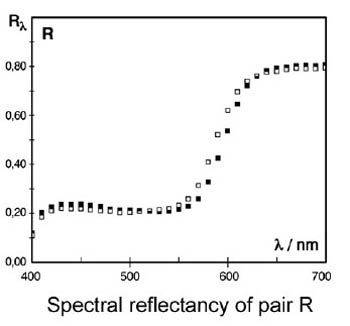 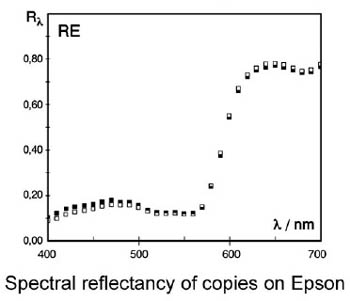 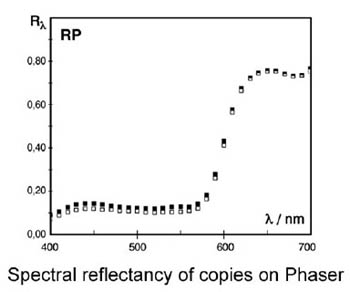 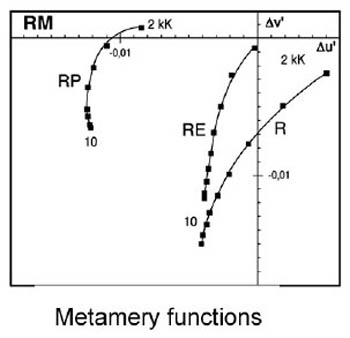 Fig. 2: Spectral reflectancies of pair R and copies 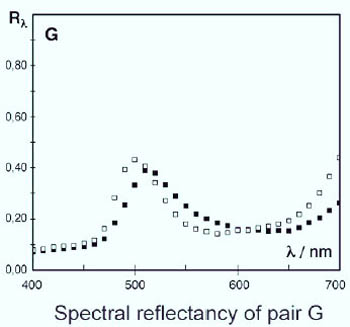 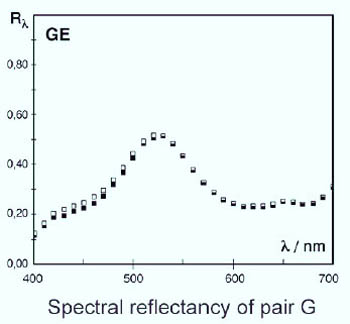 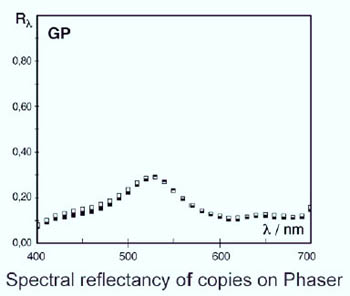 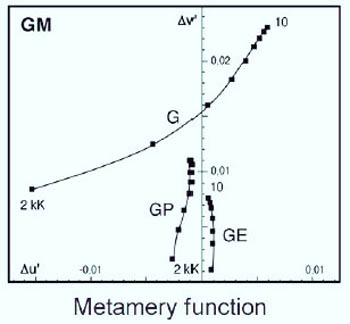 Fig. 3: Spectral reflectancies of pair G and copies 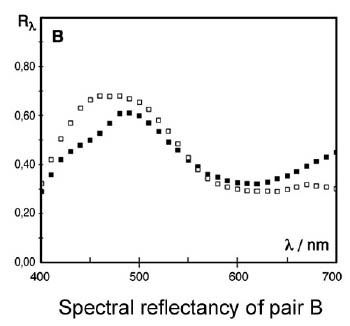 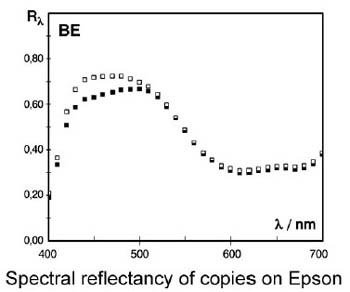 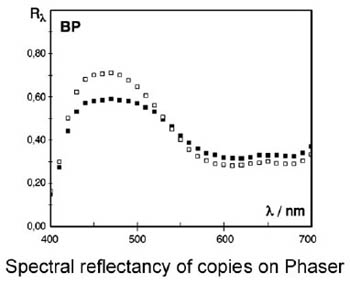 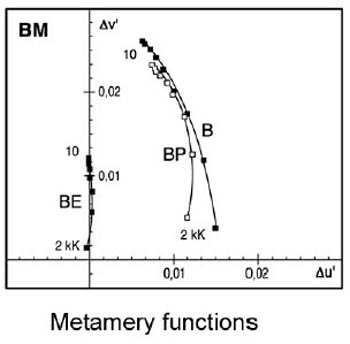 Fig 4: Spectral reflectancies of pair B and copies  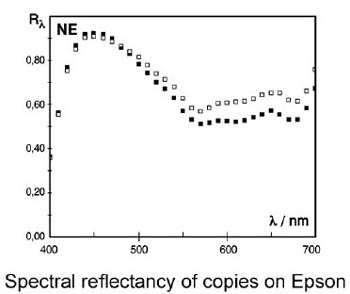  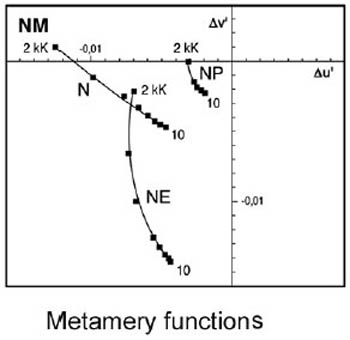 Fig. 5: Spectral reflectancies of pair N and copies
References Agic D., Broz D., IARIGAI (2000), Advances in Printing Science and Technology, Volume 26, 219-226 Metameric Index von Probenpaaren bei Lichtartwechsel, DIN 6172, (1993), Beuth Verlag GmbH, 1000 Berlin 30 Schläpfer K., (1993), Farbmetrik in der Reproduktionstechnik und in Mehrfarbendruck, Ugra-Empa CH 9001. St. Gallen Wyszecki G., Stiles W.S., (1982), Color Science 2 nd edition, John Wiley and Sons, New York |
||||||||||||||||